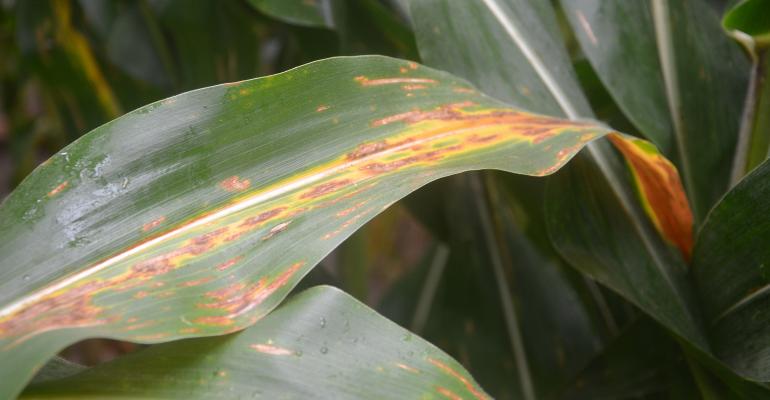
For some of you, it is very near time to think about fungicide application in your fields. For others, that time is right around the corner. Knowing when to apply for maximum benefit is an important component of any sound crop management plan.
In corn, this issue sometimes stirs up a bit of controversy. Really, the two biggest questions to ask yourself are:
- Are you harvesting early (20% moisture) or field drying?
- Has southern rust been detected in your fields or surrounding areas?
There are several companies working with fungicide application timings and rates in corn to see if there are benefits to going earlier or adding applications. For now, however, the recommended application timing is still brown silk. This may not give us a huge yield response, but it should give us season-long protection from southern rust. And for those growers that field dry corn, it will offer some help with late season intactness and stalk strength for standability.
If you’re growing beans your timing is a little more concrete. Making a fungicide application at the R3/R4 growth stage has been an important management practice for many years. Some people will refer to this specific timed application as the “yield bump.” Over the past 15 years research at MSU has indicated that 50 to 60% of the time the fungicide application provides a positive yield benefit when the fungicide is applied in a high-yield situation. A high-yielding soybean environment is termed one whereby soybean has been the continuous crop and the field is irrigated. Double-crop soybean following wheat is not considered to be a continuous soybean situation. There is a lot of discussion regarding the specific rate of fungicide to be applied at R3/R4 (or any other growth stage.) Keep in mind, full label rates perform best when attempting to manage disease.
If you have questions, head up to the top of this page and find your local Armor Seed Sales Agronomist or Sales Rep who will be happy to help find the answers.
Curtis Fox // This email address is being protected from spambots. You need JavaScript enabled to view it.











